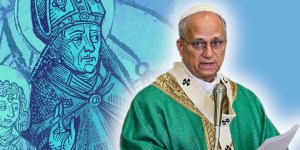He’s particularly known for his commitment to peace. History records that he stopped Attila, king of the Huns, in his quest to conquer Italy. In 452, he negotiated with the barbarian leader in Mantua and convinced him to halt his invasion. Three years later, he also prevented the Vandals, led by Genseric, from destroying the city of Rome.
A theological giant
During his 21-year pontificate, Leo I also exerted a strong influence in theology. He fought against various heresies, including Monophysitism, a doctrine that denies the humanity of Christ and recognizes only his divinity, and Nestorianism, which affirms the existence of two persons in Jesus—one divine and the other human.
His writings inspired the Ecumenical Council of Chalcedon in 451. His doctrinal text, “Tome to Flavian,” addressed to the bishop of Constantinople, was acclaimed by the council fathers. They reportedly exclaimed upon reading it, “Peter has spoken through the mouth of Leo!”
Following him, the acts of the Council affirmed the union of the human and divine natures “without confusion or change, without division or separation” in the person of Jesus.
Affirming papal primacy
At the ecclesial level, he insisted on the primacy of the bishop of Rome over other bishops, conferring on him the mission of guardian of the unity of the Church. Leo I is also remembered as the promoter of numerous works of charity.
According to Vatican News, the 45th pope in history holds several “firsts.” He was the first successor of Peter whose sermons were preserved — some 100 homilies and 150 letters. He’s also one of only two popes to have been given the title “Doctor of the Church” in 1754, and the first the be called “the Great.”
Pope St. Leo I is believed to be the first pope to have been buried in St. Peter’s Basilica (which stands atop Peter’s remains). His relics are in the Chapel of the Madonna of the Column.

